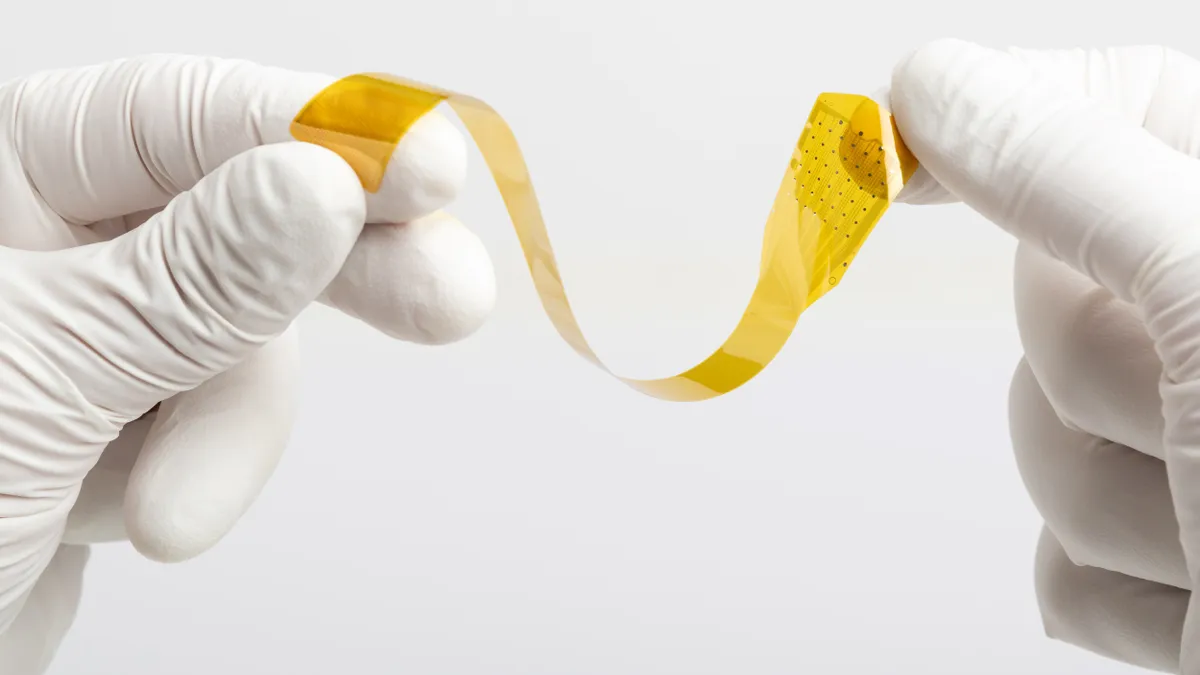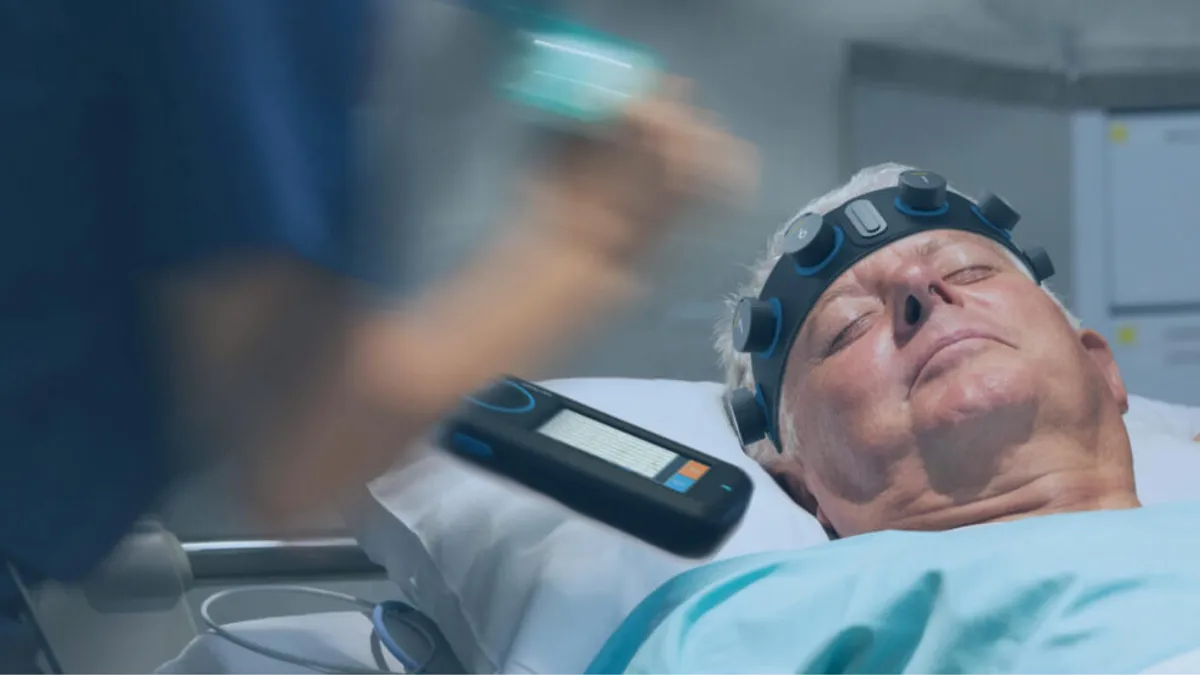Philips’ recall of millions of sleep apnea and ventilator machines has been one of medtech’s biggest stories over the last year.
The recall, announced in June 2021, has grown to affect more than 5.5 million devices. As of May, the company has set aside about 885 million euros (about $934 million at the time) to address the recall.
Philips is also facing multiple lawsuits over the devices and has been subpoenaed by the U.S. Department of Justice over its handling of the recall. The turmoil has given rival ResMed a unique opportunity to steal market share.
Roy Jakobs, chief business leader for Philips’ Connected Care unit, spoke about the company's recall process, its communication efforts, and how the repair and replacement program is progressing.
Philips said last week that about 90% of the program will be completed in 2022. Still, Jakobs said that supply chain constraints are slowing the replacement and repair of faulty devices, and making it harder for the company to tell patients when their replacement device or repair kit will arrive.
This interview has been edited and condensed for clarity.
MEDTECH DIVE: When will the repair and replacement program be complete?
ROY JAKOBS: We expect to finish the program in early 2023. There are things we can control and things we cannot.
From a controllable perspective, we could even complete the repair and replacement program this year if we could use all of our capacity all of the time until the end of the year. But we have to acknowledge that we are not living in an unconstrained world. Especially from the supply part and logistics, we are not getting all that we need to maximally produce the devices that we need to remediate.
The supply and logistics environment is going to remain a daily battle because the world is so unpredictable, and we see COVID rising again, unfortunately.
When was the first time that the foam breakdown problem and patient safety concerns came to the company’s attention?
JAKOBS: In early 2021, when we saw the complaints rising more steeply, we did the testing, and we said we really want to take proactive measures out of an abundance of caution.
That was preceded by complaints that were coming into the [sleep and respiratory care] Respironics unit, which they were dealing with on an individual basis. Those complaints did not reach the level where we would take it to a global recall. The [number of complaints] began rising in 2021, and after we announced the recall, we saw another wave of complaints come in.
But there was an earlier discovery within Respironics that they dealt with on an individual basis.
The FDA’s inspection report noted that from 2008 to 2017, there were about 175,000 reports in Philips’ system potentially related to the foam breakdown, but the company had not yet begun an investigation. Why?
JAKOBS: Complaints about particles are quite common as part of the use of a CPAP or BiPAP machine. Because when you start to use it in a home environment, these devices collect quite a variety of particles, whether it’s dust, whether it’s smoke, [and] these are devices that have a motor and propellers in them, and they absorb air and they create airflow. So you need to be very precise in your distinction of what is a typical particle.
Then why the gap between the FDA saying there were potentially 175,000 reports during a specific time period and then Philips saying it only filed 30 medical device reports to the FDA between 2011 to 2021?
JAKOBS: I would not have the exact detail to share. But as I said, if there’s a search — and we know that the agency did a search — you can generate a very broad search field based on the criteria that you use. If you search particles, you get a very broad array of hits. And then the question is, what is truly related to foam? And then if it’s related to foam, is it truly related to foam degradation?
It’s not an easy process to detect exactly which particle is coming from which origin, and therefore has a certain risk profile to it, or [no risk] at all. And that’s something that you need to very carefully work through, and that’s actually what we’ve been doing from day one.
In March, the FDA ordered Philips to notify all consignees of the recall, calling prior efforts “inadequate.” What were the communication efforts when the recall began in June?
JAKOBS: From the beginning, we have had a very extensive communication approach to really make our best effort to inform all audiences involved in this. But it’s not that easy because of the scale of people involved.
Normally, we don’t engage directly with patients. There are only very few instances where we do. For example, in the U.S. market, durable medical equipment (DME) suppliers are communicating with the patient, and before that, it’s the clinician who prescribes a therapy that includes a device.
We gathered data from these DMEs, and we also asked them if we should reach out to patients on their behalf or if they would respond to patients themselves. We then opened an online channel that we have been using ever since we started to communicate with patients.
What has Philips done to revamp the communication process since the FDA’s order?
JAKOBS: After the FDA order, we went back again to find every single DME that was not aware and made them aware. It’s not that we didn’t communicate before, because we reached out to everyone, but maybe the mailed notices didn’t get opened or they were not aware of them for some reason. We also increased our efforts with patients, such as putting ads in newspapers or banners in doctors’ offices. From offline to online, we’ve made various efforts.
But there are two pieces to the recall: One is the communication to patients that recalled devices can be registered. But I think the most pain has come with communicating when patients will get their replacement devices. Patients may ask: “Why does it take so long? You’re a big company, you can produce fast.” But even for us — a volume of almost 6 million devices — that’s a huge volume and six times what we did annually.
[Because of the supply chain disruptions], the window of visibility, unfortunately, has shortened significantly. In that sense, it’s hard to give very precise predictions. That’s where a lot of the patients' frustration comes from.
Considering that the FDA said that there were reports of foam breakdown years ago, was there an opportunity to do the recall sooner than June 2021, perhaps preventing patients from using devices that were unsafe?
JAKOBS: In my view, no. First, you can eliminate the health risk upon completion of the remediation of the devices, and we have gone from day one as fast as we could on that. Secondly, we have also been working on making sure that we understand any health risks associated with the recall. As you have been learning through the progressive insights that we’re getting right now, we have learned that VOC testing proved that these are within limits.
We took action at Philips-level when we were made aware of these rising complaints, and then we took very quick, very significant action on this. There were, as I said before, individual actions within Respironics case that they acted upon. The moment that Philips got the notice at the company level, we immediately took the biggest action that you can initiate on this.
Has this series of incidents pushed Philips to review its systems for recall and product safety assessment, and to make company-wide changes?
JAKOBS: Improving product quality is not something that we just started working on because of the recall. But there are definite learnings that you take into account based on this case.
We have a Philips-wide quality program that we are working on. The company is exploring what capabilities are needed to drive quality, how to handle quality issues from a risk management perspective, such as triaging, and how to have structural, proactive communication with all the different audiences when we’re dealing with a recall.
There is a continuous feedback loop from what we are doing within the specific Respironics recall and using that in the company-wide program, which then also includes how we can improve our processes, and how we can improve as a company and learn from this.


















